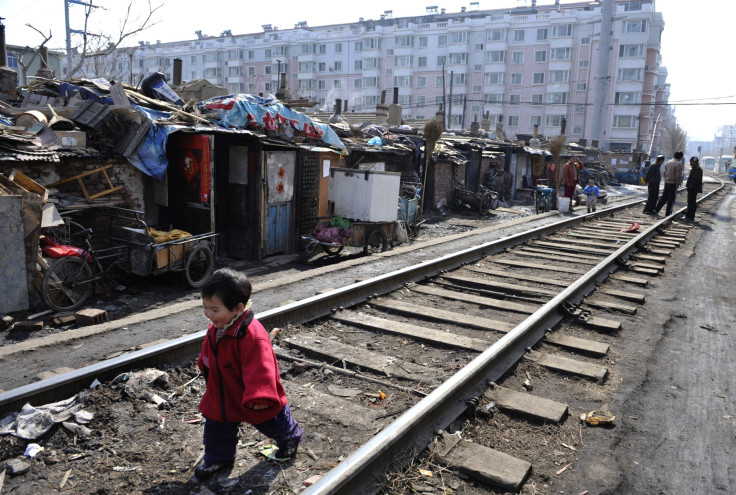China’s War On Poverty: Key Policy Bank To Lend Nearly $460 Billion Through 2020

As part of the Chinese government’s ambitious plan to lift millions of people in the country out of the poverty line, the Agricultural Development Bank of China (ADBC) will lend 3 trillion yuan ($458 billion) between 2016 and 2020 to support development in rural areas, state-run Xinhua News Agency reported Sunday.
The money allocated by the ADBC, which is one of the country’s main policy banks, would be used to fund education, infrastructure development and agriculture in rural areas as well as for “relocation of people in poverty,” Xinhua reported, citing the bank’s Chairman Xie Xuezhi.
Elimination of poverty and creating a “moderately prosperous society” by 2020 are two key goals outlined in China’s latest five-year plan. Currently, roughly 70 million people out of China’s population of nearly 1.4 billion live below the poverty line, earning less than 2,300 yuan ($351) a year.
“To bridge the development gap between urban and rural areas is a difficult challenge for us. To build a moderately prosperous society in an all around way is the goal of all Chinese people. None of them can be left behind,” Chinese President Xi Jinping said in October. “In the next five years, the more than 70 million people under poverty — under Chinese standards — will be out of poverty. This is an important step in implementing China’s development agenda after 2015.”
Earlier this year, the government also announced that it will relocate over 2 million of its poorest citizens from poverty-stricken remote communities to more developed urban areas that provide better job opportunities.
“Many poor people live in harsh conditions or fragile environments. The relocation will help them seek a better life,” Liu Yongfu, a member of China’s State Council, said at the time. “This initiative is based on previous experiences and we have many successful cases.”
© Copyright IBTimes 2024. All rights reserved.






















